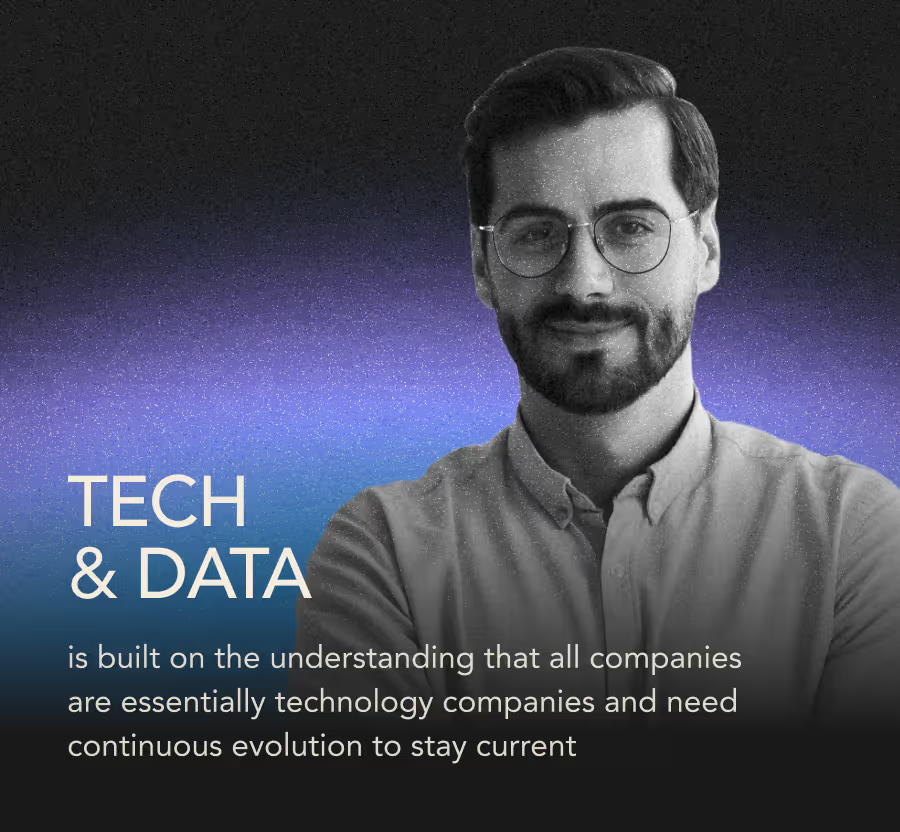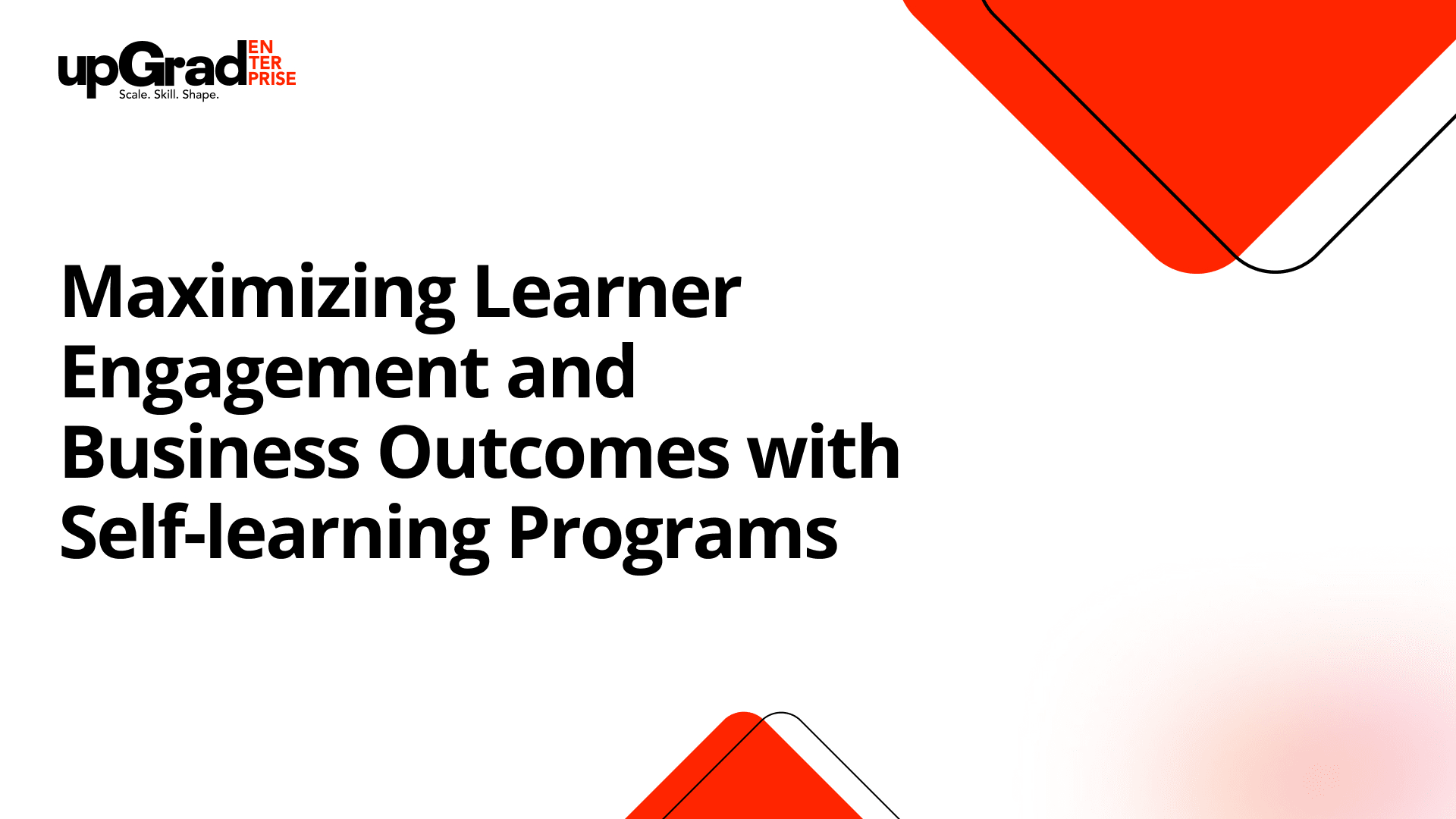Employees today expect flexibility, autonomy, and personalized learning—not outdated training formats. That's why self-learning engagement is quickly becoming the secret weapon for forward-thinking organizations.
According to LinkedIn’s 2023 Workplace Learning Report, 83 % of organizations aim to build a more people-centric culture, recognizing that tailored, self-directed learning fuels engagement and productivity
In this guide, you'll discover practical strategies to maximize learner engagement and directly boost your business outcomes. Plus, we’ll highlight how leading platforms like upGrad Enterprise can help your organization successfully implement powerful self-learning programs.
ChatGPT said:
Understanding self-learning engagement and its business impact
Defining self-learning engagement
Effective self-learning engagement occurs when employees actively and voluntarily participate in their learning journeys, driven by personal goals and intrinsic motivation. Unlike traditional training, which can feel imposed, self-learning emphasizes autonomy, choice, and flexibility, allowing learners to absorb knowledge at their own pace.
Key components of effective self-learning include:
- Learner autonomy: Employees choose when, where, and how they engage with content.
- Personalized experiences: Content and pathways tailored specifically to individual career goals.
- Interactive content: Engaging formats such as videos, interactive modules, quizzes, or discussions that actively involve learners.
When these elements align, engagement deepens, resulting in meaningful skill growth and improved employee satisfaction.
How self-learning drives business outcomes
Investing in self-learning isn't just beneficial for employees—it's a strategic move that can transform your organization’s performance. Businesses that effectively harness self-learning experience tangible results, such as:
- Improved productivity: Employees engaged in self-directed learning tend to complete tasks more efficiently, contributing directly to organizational growth.
- Higher employee retention: Offering opportunities for self-guided growth shows employees their career development is valued, reducing turnover.
- Fostering innovation: Encouraging continuous self-learning inspires creativity and fresh thinking across the organization.
By leveraging platforms like upGrad Enterprise, companies can seamlessly integrate personalized self-learning pathways into their corporate training strategies, effectively aligning employee growth with overall business objectives.
Key strategies to maximize learner engagement through self-learning programs
Designing learner-centric content
To boost learner engagement, your content must resonate personally with employees. Learner-centric content directly aligns training to employees' unique roles, skill gaps, and career goals.
Personalization and customization
Employees are more engaged when learning feels personally relevant. Customized learning paths encourage active participation and meaningful skill development.
- Practical tip: Allow employees to select learning topics aligned with their career goals.
- Impactful example: Platforms like upGrad Enterprise offer adaptive learning journeys tailored specifically to each learner’s role, interests, and growth trajectory.
Microlearning modules
Short, focused content—often called microlearning—helps learners absorb and retain knowledge more effectively.
- Practical tip: Create content segments no longer than 5-10 minutes to maintain high engagement levels.
- Quick tutorial: Use clear headings, interactive videos, short quizzes, and infographics to deliver concise yet impactful learning.
Leveraging interactive technologies
Interactive tools dramatically enhance learner engagement by making training dynamic, enjoyable, and impactful.
Gamification elements
Introducing game-like elements such as leaderboards, badges, or points can significantly boost learner motivation and participation.
- Practical tip: Recognize and reward progress visibly through badges or certifications.
AI-driven platforms
AI technology enables precise identification of skill gaps, allowing organizations to deliver the right content to the right learner at the right time.
- Practical tip: Use AI-powered analytics to recommend personalized learning pathways.
- Impactful example: upGrad Enterprise uses AI-based recommendations to align learning resources closely with individual employee needs, maximizing engagement and learning outcomes.
Encouraging continuous learning cultures
A culture of continuous learning drives sustained employee engagement and long-term organizational success.
Incentivizing self-learning
Employees feel motivated when their learning efforts are visibly recognized and rewarded.
- Practical tip: Introduce recognition programs or tie promotions to skill enhancement.
- Impactful example: Organizations frequently implement reward systems to celebrate learner milestones, significantly boosting ongoing participation.
Social and collaborative learning
Facilitating collaboration and peer-to-peer learning encourages continuous knowledge sharing.
- Practical tip: Establish online communities or forums where employees can discuss and share learnings.
- Impactful example: Companies leveraging collaboration tools such as Slack, Microsoft Teams, or internal forums often report higher engagement through interactive, peer-driven learning experiences.
By adopting these strategies, businesses can fully leverage self-learning programs to increase employee engagement, build critical skills, and drive measurable organizational outcomes.
Measuring and improving self-learning engagement
Effectively measuring learner engagement ensures your self-learning programs remain impactful and closely aligned with business goals. By monitoring key metrics and incorporating feedback, you can continuously enhance the learner experience.
Data-driven assessment and metrics
Data offers powerful insights into how well your self-learning strategies resonate with learners. Regular assessment helps identify what's working and what needs improvement.
Key metrics to track
Essential metrics to monitor include:
- Course completion rates: Indicates how engaging and relevant the content is.
- Active participation: Tracks frequency and duration of interactions within learning platforms.
- Skill proficiency growth: Measures tangible improvement in employees' abilities over time.
Tools and platforms for effective measurement
To accurately track and visualize learner engagement, utilize advanced analytics tools and learning management systems (LMS).
- Practical tip: Use built-in analytics from platforms like upGrad Enterprise or integrate third-party analytics tools such as Google Analytics or Power BI.
- Quick tutorial: Create customized dashboards to regularly monitor learner interactions, course completions, and engagement trends over time.
Iterative improvement through feedback loops
Continuous improvement depends on actively gathering and applying learner feedback. Employees' insights are critical for refining content and increasing engagement.
- Practical tip: Regularly survey employees after completing courses to gather qualitative feedback.
By consistently measuring and refining self-learning engagement, your organization can foster a sustainable culture of continuous professional development, driving measurable improvements in employee productivity and business outcomes.
Common pitfalls and challenges in self-learning programs and how to overcome them
While self-learning programs offer immense potential, organizations can face challenges in their implementation. Recognizing these common pitfalls and proactively addressing them is key to sustaining high learner engagement.
Addressing low learner motivation
Even the best-designed self-learning program can falter if employees lack intrinsic motivation. Overcoming this hurdle requires purposeful strategies:
- Practical tip: Integrate clear incentives, such as recognition programs or career-growth pathways, to encourage active participation.
- Effective strategy: Provide timely recognition for employees completing critical milestones or demonstrating significant skill improvements.
Resolving technological barriers
Technological issues can frustrate learners, creating barriers that disrupt engagement. Seamless tech integration ensures a frictionless learning experience.
- Practical tip: Ensure learning platforms like upGrad Enterprise are intuitive, mobile-friendly, and easily accessible across devices.
- Recommended approach: Offer onboarding sessions and support resources to help learners comfortably adopt new technologies.
Avoiding information overload
Too much content, poorly organized, can overwhelm employees, leading to disengagement or incomplete training.
- Practical tip: Structure learning content into digestible modules, clearly categorized by relevance or skill level.
- Recommended solution: Employ microlearning strategies—concise content pieces of 5-10 minutes—to make learning manageable and effective.
By proactively addressing these challenges, organizations can significantly enhance their self-learning initiatives, maintaining high learner engagement and ensuring lasting business outcomes.
Industry trends and future outlook of self-learning engagement
The landscape of self-learning continues to evolve rapidly, driven by innovative technology and shifting workplace expectations. Staying informed on emerging trends ensures organizations can proactively leverage opportunities to boost engagement and performance.
Rising role of mobile-first learning experiences
With the rise of remote and hybrid work, learners increasingly access training from mobile devices.
- Practical tip: Optimize content for mobile screens to ensure seamless access anytime, anywhere.
- Emerging trend: Mobile microlearning modules allow employees to learn in short bursts during commutes or breaks, significantly increasing engagement.
Emergence of immersive learning (VR/AR)
Virtual Reality (VR) and Augmented Reality (AR) offer highly engaging and immersive self-learning experiences.
- Practical tip: Experiment with immersive simulations or AR-enhanced training for high-impact, practical skill training.
- Insightful projection: Gartner predicts that by 2026, 25% of employee training programs will include VR or AR to enhance engagement and knowledge retention.
Predictive learning analytics and advanced personalization
AI-driven predictive analytics will increasingly shape personalized learning paths, further enhancing learner engagement.
- Practical tip: Adopt AI-driven tools, like those offered by upGrad Enterprise, to proactively identify skill gaps and suggest personalized content.
- Future insight: Organizations using predictive analytics can precisely anticipate learning needs, creating more relevant and impactful training experiences.
Staying ahead of these trends positions your organization to harness self-learning fully, creating lasting competitive advantages through continuous employee development and higher learner engagement.
Final thoughts
Self-learning programs represent a powerful shift in how organizations approach employee development. By prioritizing personalized, interactive, and flexible learning experiences, companies can significantly enhance learner engagement—ultimately driving measurable business outcomes like improved productivity, innovation, and employee retention.
The strategies discussed—from creating learner-centric content and leveraging technology to overcoming common pitfalls—provide a clear roadmap for maximizing the impact of your self-learning initiatives. Embracing emerging trends, such as mobile-first experiences, immersive technologies, and predictive analytics, ensures your learning strategy remains relevant and engaging.
To fully realize the potential of self-learning programs, it's essential to choose the right technology partner. Platforms like upGrad Enterprise offer robust tools, AI-driven insights, and customizable learning journeys, perfectly aligning employee growth with your organizational goals.
Now is the time to invest in self-learning engagement, empowering your workforce and transforming your business results.
Frequently asked questions (FAQs)
1. What is self-learning engagement in corporate training?
Self-learning engagement refers to the active participation and motivation employees exhibit when directing their own learning journeys. It involves personalized content, interactive experiences, and flexible, self-paced learning approaches.
2. How can self-learning programs improve employee productivity?
Self-learning programs enhance productivity by aligning training with individual goals, reducing training fatigue, and ensuring employees develop relevant skills efficiently. Highly engaged employees typically perform better, delivering greater value to the organization.
3. What metrics should organizations track to evaluate self-learning effectiveness?
Key metrics include course completion rates, learner engagement frequency and duration, skill improvement assessments, and learner feedback ratings. Analyzing these metrics helps companies refine learning experiences continuously.
4. How do platforms like upGrad Enterprise support self-learning initiatives?
Platforms such as upGrad Enterprise offer AI-powered personalized learning journeys, comprehensive analytics, and interactive, mobile-friendly content, enabling organizations to effectively boost learner engagement and achieve business objectives.
5. What common challenges do organizations face when implementing self-learning programs?
Common challenges include low learner motivation, technological barriers, and information overload. These can be addressed by providing clear incentives, ensuring seamless technology integration, and structuring content into manageable, engaging modules.









